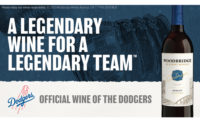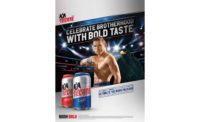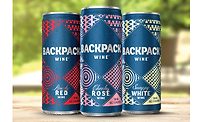Branding Partnerships
The combination of branded products with branded ingredients can create consumer pull
Most beverage ingredients
are nameless, faceless items on a nutrition label – at least as far
as consumers are concerned. But some ingredient companies have made a point
of courting consumers as well as manufacturers, branding their ingredients
in the hope that they will become part of a beverage product’s
identity.
Sweeteners are perhaps the most well known of these
ingredients – beverages containing NutraSweet benefited from its
publicity in the ‘80s, and Splenda is having a similar run today.
Consumer advertising, including television spots for table-top versions of
Splenda have helped the sweetener become an integral part of new diet
products such as Diet Coke Sweetened with Splenda. Coca-Cola’s
advertising for the product even makes use of the little yellow packets to
show its importance.
Co-branding isn’t an easy proposition, but with
today’s focus on functional beverages, some nutritional ingredient
companies are finding it worthwhile to invest in the consumer side of the
marketing equation. The Solae Co., based in St. Louis, is currently running
a consumer campaign to create awareness for its soy protein and the
products that include it.
“The Solae TV advertising campaign was
implemented to generate consumer awareness of the Solae brand and connect
it to commercial products in the marketplace where consumers could turn to
get great-tasting products that offer health benefits,” says Jean
Heggie, marketing leader, North American food at Solae.
The company has created a full slate of promotions,
including Web site programs, print
advertisements, satellite media tours, publicity initiatives, sampling
efforts, retailer trade shows and “health influencer”
communication. And it has partnered with its finished product customers for
mutual support.
“We still consider the Solae brand in the early
stage of development,” Heggie says. “So we feel it is
imperative that in our communication, we connect it to products in the
marketplace that consumers can go out and buy.”
The company teamed with General Mills, based in
Minneapolis, to create 8th Continent Soymilk, and advertising for the
product prominently features Solae as the protein ingredient.
“Food companies today appear to be very
receptive to considering co-branding partnerships, particularly if the
message supported by the co-brand is complementary to the host
brand,” Heggie says. “In our case, we are communicating a
message of great-taste and better-for-you nutrition with our Solae
brand.”
The combination of flavor and nutrition is an
important part of the Solae consumer communication.
“We believe it can provide consumers taste
assurance – which, in soy-based foods, is a big hurdle. For instance,
we know taste perception is the No. 1 barrier to trial for soy-based foods,
and with a branded ingredient such as Solae, we can help communicate a more
positive taste message – more positive, for instance, than what might
be conveyed with ‘generic’ soy,” Heggie says.
“Additionally, the Solae brand is unique in the
fact that it has years of nutrition research backing it. This aspect, and
the brand itself, adds credibility and trust to the nutritional promises
made by the host product.”
Jeff Hilton, president of Integrated Marketing Group,
Salt Lake City, says there is a delicate balance to communicating
ingredient research to consumers. “The language you use to talk to
consumers is different,” he says. “[Manufacturer] partners will
be interested in the technical aspects; consumers are interested in
‘What’s in it for me?’ – a feature-benefits focus.
Consumers really care about making sure the health benefit comes through if
it’s a functional ingredient.”
Hilton has worked with natural products companies to
create co-branded marketing campaigns and says that the segment has begun
to embrace the concept during the past several years. In the more
mainstream market, he points to both Splenda and Solae as companies that
have successfully taken on consumer marketing.
“The thing that most companies underestimate is
how much money it takes to drive that kind of awareness,” he says.
“I think that Splenda is an example of somebody who’s done it
right because they had millions of dollars to put behind it. Most companies
don’t realize the amount of frequency and reach you’ve got to
build to get a consumer to where they’ll say, ‘I have to pick
that up,’ or ‘I have to look for that.’”
Zeroing in on consumers
Glanbia Nutritionals, Monroe, Wis., has taken a more
targeted approach in marketing its whey protein ingredient to consumers.
The company’s CFM whey protein is especially appealing to athletes
and the body building community, and because those consumers are more
interested in the details of the ingredient, Glanbia has created
promotional efforts specifically for them.
“This year, we launched a Web site specifically
for those people – the sports enthusiasts, body builders, strength
athletes – to educate them on whey protein in sports nutrition
products,” says Kelly Czerwonka, marketing manager at Glanbia.
The company also uses public relations strategies to
get the word out to body building publications, and this spring attended
the Arnold Classic, a body building trade show, in conjunction with a
customer that uses CFM in its products.
CFM stands for cross-flow microfiltration, the method
by which the protein is extracted. Czerwonka says the Web site,
sportsprotein.com, provides information on the
differences between CFM protein and proteins that use an ion exchange
process.
“There’s a large difference in the protein
that results, and there’s a good discussion on the Web site about
that,” Czerwonka says.
The site also tells consumers where they can find
products containing CFM. “We don’t sell direct, but we have
listed our customers products. And a lot of customers put CFM right on the
label,” Czerwonka says. “It helps both of us. It helps create
consumer pull for our customers’ brands.”
For the more general population, Glanbia also has had
customers make use of its TruCal calcium ingredient. TruCal is 100 percent
natural milk calcium containing 24 percent calcium and 13 percent
phosphorus, which the company says is a formulation that makes it conducive
to bone growth and increased bone density.
TruCal is a promoted ingredient in an orange juice
available in supermarkets in Wisconsin, and Czerwonka says the retailer has
used in-store promotions and other marketing materials to communicate the
value of dairy calcium.
She also indicates that the same nutritional research
that sells Glanbia’s ingredients to customers can be used to reach
consumers, but in different ways.
“We’re one step removed from the consumer,
but we still need to be thinking of them all the time,” she says.
“Even within our b-to-b customers, we talk to marketing people and
R&D people, and they want to see different parts of the
research.”
Co-branding, of course, can’t work for every
ingredient. Commodity ingredients, those without compelling scientific
support or ingredients not protected by intellectual property rights are
weak prospects. Czerwonka says Glanbia’s value-added positioning is
what makes it possible to connect with consumers.
“We’re a solutions provider,” she
says. “We don’t have commodity ingredients, we have high-end
ingredients that are really more solutions. There are some good reasons
someone would choose Glanbia Nutritionals products, and those are things
like functionality.”
For companies – finished goods and ingredient
companies alike – that want to pursue a consumer marketing angle for
their ingredients, a few things should be kept in mind.
The ingredient brand and the finished product brand
should support each other’s positioning, Heggie says. “A
co-brand that is relevant or reinforces the positioning of the product will
be most effective.”
In addition, she says, any functional claims should be
backed by research, and co-branding should offer incremental marketing
value to the host brand. “Can it offer the potential to enhance the
image and consumer awareness of the host brand?” she says. “At
the Solae Co., we spend a lot of time with our branding partners, and
potential partners, understanding their marketing plans and challenges and
determining where we can implement programs complementary to their
plans.”
Hilton adds that it is important to ensure that all
points of communication with consumers carry the same message. “Fully
integrated marketing activity is really
important,” he says. “Your brand image, in the mind of the
consumer, is a combination of all kinds of impressions and exposures they
get, all the way from your ads to what they read in the newspaper. So the
more you can make sure all your marketing messages are consistent and
integrated, the better result you’ll have.” BI


